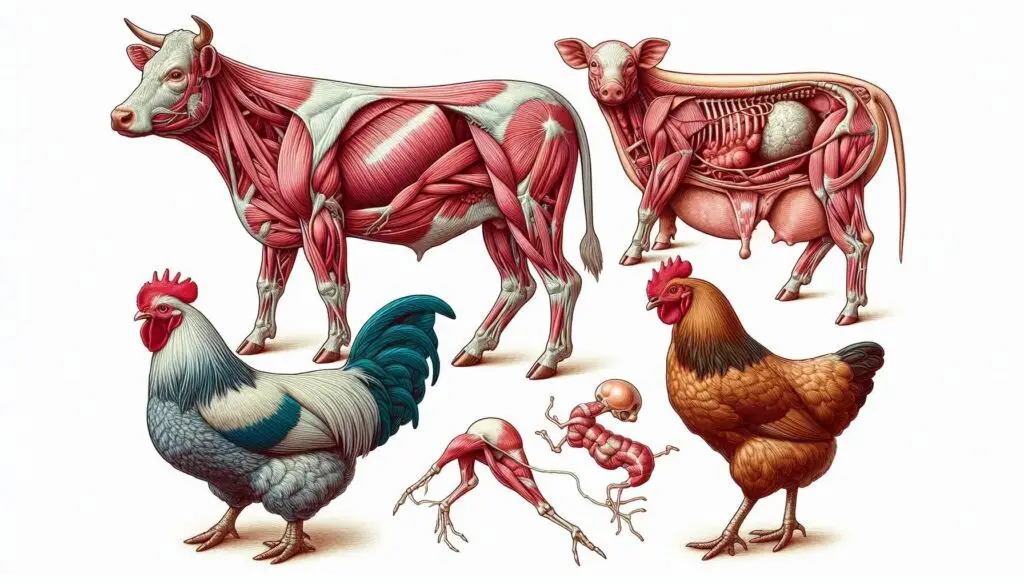Abnormal Constituents of Urine in Animals: Urinalysis

Introduction to Urinalysis
Urinalysis involves analyzing a urine sample to detect abnormalities. The examination focuses on physical properties, chemical composition, and microscopic elements. Abnormal findings can indicate underlying health issues that require further investigation.
Why Urinalysis Matters
- Early Detection:
- Identifying issues early can lead to timely treatment.
- Regular urinalysis can help monitor chronic conditions.
- Comprehensive Health Assessment:
- Urine reflects metabolic and physiological changes.
- It provides insights into kidney function and overall health.
- Non-Invasive Testing:
- Collecting urine is simple and non-invasive.
- It poses minimal stress for the animal compared to blood tests.
Common Abnormal Constituents of Urine
1. Proteinuria
Definition: The presence of excess protein in urine.
- Normal Levels: Healthy animals typically excrete minimal protein.
- Causes of Proteinuria:
- Kidney disease
- Inflammation
- Infections
Implications: Proteinuria often indicates kidney damage or dysfunction. It may require further tests like blood work or imaging to determine the underlying cause.
2. Glycosuria
Definition: The presence of glucose in urine.
- Normal Levels: Glucose should not be present in healthy urine.
- Causes of Glycosuria:
- Diabetes mellitus
- Stress-induced hyperglycemia
- Renal threshold issues
Implications: Glycosuria typically suggests diabetes or other metabolic disorders. It necessitates further evaluation to manage blood sugar levels effectively.
3. Ketonuria
Definition: The presence of ketone bodies in urine.
- Normal Levels: Ketones are usually absent.
- Causes of Ketonuria:
- Starvation
- Uncontrolled diabetes
- High-fat diets
Implications: Ketonuria indicates that the body is using fat for energy instead of glucose. This condition requires immediate attention, especially if diabetes is suspected.
4. Hematuria
Definition: The presence of blood in urine.
- Normal Levels: Healthy urine should not contain blood.
- Causes of Hematuria:
- Urinary tract infections (UTIs)
- Kidney stones
- Trauma or injury
Implications: Hematuria can signal serious conditions requiring prompt diagnosis and treatment, such as infections or stones.
5. Bilirubinuria
Definition: The presence of bilirubin in urine.
- Normal Levels: Bilirubin should be absent.
- Causes of Bilirubinuria:
- Liver disease
- Hemolytic anemia
- Bile duct obstruction
Implications: Bilirubinuria often indicates liver dysfunction or hemolysis and requires further investigation through blood tests and imaging.
6. Pyuria
Definition: The presence of pus or white blood cells in urine.
- Normal Levels: Healthy urine has no pus.
- Causes of Pyuria:
- Bacterial infections
- Inflammation
- Kidney disease
Implications: Pyuria suggests an infection or inflammation within the urinary tract that needs treatment with antibiotics or anti-inflammatory medications.
7. Crystalluria
Definition: The presence of crystals in urine.
- Normal Levels: Some crystals may be normal depending on diet.
- Causes of Crystalluria:
- Metabolic disorders
- Dehydration
- Diet changes
Implications: While some crystals may not indicate disease, others can lead to stone formation and urinary obstruction, requiring dietary adjustments or medical intervention.
8. Lipuria
Definition: The presence of lipids (fats) in urine.
- Normal Levels: Lipids should not be present.
- Causes of Lipuria:
- Severe metabolic disorders
- Diabetes mellitus
Implications: Lipuria can indicate significant metabolic disturbances that require immediate veterinary attention.
Physical Characteristics of Urine
Color Changes
The color of urine can provide valuable information about hydration status and health:
- Pale Yellow to Amber (Normal):
Indicates proper hydration. - Dark Yellow or Amber (Dehydration):
Suggests insufficient water intake. - Red or Brown (Hematuria):
May indicate blood presence or myoglobin from muscle injury.
Odor Variations
Urine odor can also signal underlying issues:
- Faint Ammonia (Normal):
Typical odor for healthy animals. - Strong Odor (Infection):
A strong smell may indicate a bacterial infection. - Sweet Smell (Diabetes):
A sweet odor may suggest ketones from uncontrolled diabetes.
Turbidity (Cloudiness)
Cloudy urine often indicates the presence of cells, crystals, or bacteria:
- Clear (Normal):
Healthy urine should be clear. - Cloudy (Infection or Crystals):
Cloudiness often suggests infection or crystallization processes occurring within the urinary tract.
Interpreting Urinalysis Results
Veterinarians interpret urinalysis results by considering various factors:
- Clinical Signs and Symptoms
- Physical examination findings guide interpretation.
- Symptoms like vomiting, lethargy, or changes in appetite provide context.
- History Taking
- Previous medical history helps identify chronic conditions.
- Dietary habits and lifestyle factors are essential for accurate diagnosis.
- Follow-Up Tests
- Additional tests may include blood work or imaging studies.
- These tests help clarify any ambiguous findings from urinalysis.
Conclusion
Understanding abnormal constituents in animal urine is crucial for diagnosing health issues early. Regular urinalysis provides valuable insights into an animal’s well-being and helps guide treatment decisions effectively. By recognizing these abnormalities, veterinarians can ensure timely interventions that improve the quality of life for pets and livestock alike.
For more pearls of Vets Wisdom:
https://wiseias.com/abo-blood-group-system-animals/





Responses